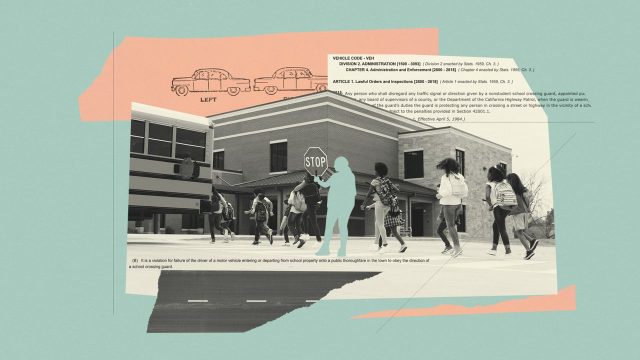
While most Americans may think of being a school crossing guard as a relatively safe profession, it appears that this is not the case. A new investigation has shed light on just how deadly being a crossing guard can be, with hundreds of people being injured and even killed on the job over the past decade. Experts also say there are gaps in how these statistics are gathered, meaning crossing guard injuries may be underreported.
How dangerous is it to be a crossing guard?
The investigation was helmed by The Associated Press alongside Cox Media Group television stations across the country. It found that during the last 10 years at least “230 school crossing guards across 37 states and Washington, D.C., were struck by vehicles,” said the AP. Nearly three dozen of these crossing guards were killed. The AP compiled this data from “incident and accident reports requested from nearly 200 police departments,” but it still represents “only a portion of guards injured and killed nationwide.”
Often, the drivers involved in these incidents received very little punishment: More than “70% of drivers who hit crossing guards received just traffic tickets or no charges at all,” said WSB-TV Atlanta, one of the stations that worked on the investigation. And the drivers regularly didn’t stop: As many as 40 of the 230 accidents were hit-and-runs, and “in at least six of those, law enforcement was never able to identify the driver who fled the scene.”
There are problems when it comes to tracking this data, and a “full accounting is impossible,” said the AP. There are no federal agencies that keep a comprehensive list of crossing guard accidents, and “only two states have made a serious effort to track crossing guard safety: New Jersey and Massachusetts.” Crossing guard protection “remains a patchwork of state and local policies.”
What can be done about this?
Certain states are looking at solutions through legislation. Some hope that “improved technology could eliminate the need for crossing guards to direct traffic,” said WSOC-TV Charlotte, which also worked on the investigation. There are also efforts being made to “give towns and school districts more authority to make safety changes, like lowering speed limits.”
In “2025, there are alternatives to having somebody standing out there holding up a sign and waving it,” South Carolina State Rep. David Martin (R) said to WSOC-TV. School districts “should have resources and the power to be able to do that instead of going through the government.”
Other communities are working on implementing additional safety measures. To assist with a lack of crossing guards in the Seattle School District, officials are using “community help, flashing crosswalk signs and trying to reroute traffic away from schools,” said KIRO-7 Seattle, another investigative partner.
But this still hasn’t made the job of a crossing guard any less deadly. Crossing guards and school flaggers “were in the top fifth of deadliest jobs” in 2023, said the AP, citing the most recent year with available data. This death rate is “on par with power line installers and air transportation workers.” A crossing guard is also the “only occupation in that top fifth that interacts with children daily.”
At least 230 crossing guards have been hit by cars over the last decade






